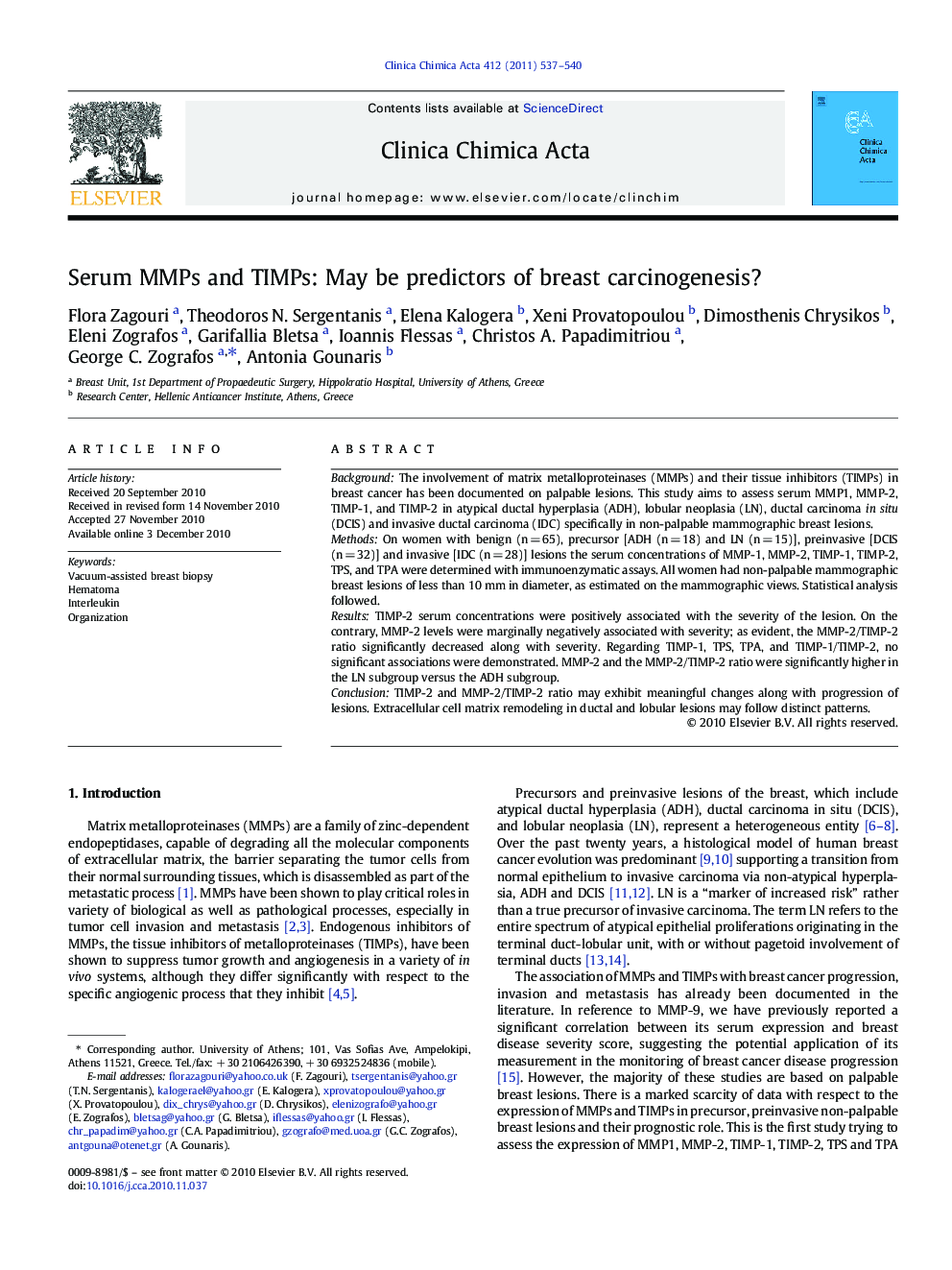| Article ID | Journal | Published Year | Pages | File Type |
|---|---|---|---|---|
| 1966417 | Clinica Chimica Acta | 2011 | 4 Pages |
BackgroundThe involvement of matrix metalloproteinases (MMPs) and their tissue inhibitors (TIMPs) in breast cancer has been documented on palpable lesions. This study aims to assess serum MMP1, MMP-2, TIMP-1, and TIMP-2 in atypical ductal hyperplasia (ADH), lobular neoplasia (LN), ductal carcinoma in situ (DCIS) and invasive ductal carcinoma (IDC) specifically in non-palpable mammographic breast lesions.MethodsOn women with benign (n = 65), precursor [ADH (n = 18) and LN (n = 15)], preinvasive [DCIS (n = 32)] and invasive [IDC (n = 28)] lesions the serum concentrations of MMP-1, MMP-2, TIMP-1, TIMP-2, TPS, and TPA were determined with immunoenzymatic assays. All women had non-palpable mammographic breast lesions of less than 10 mm in diameter, as estimated on the mammographic views. Statistical analysis followed.ResultsTIMP-2 serum concentrations were positively associated with the severity of the lesion. On the contrary, MMP-2 levels were marginally negatively associated with severity; as evident, the MMP-2/TIMP-2 ratio significantly decreased along with severity. Regarding TIMP-1, TPS, TPA, and TIMP-1/TIMP-2, no significant associations were demonstrated. MMP-2 and the MMP-2/TIMP-2 ratio were significantly higher in the LN subgroup versus the ADH subgroup.ConclusionTIMP-2 and MMP-2/TIMP-2 ratio may exhibit meaningful changes along with progression of lesions. Extracellular cell matrix remodeling in ductal and lobular lesions may follow distinct patterns.
